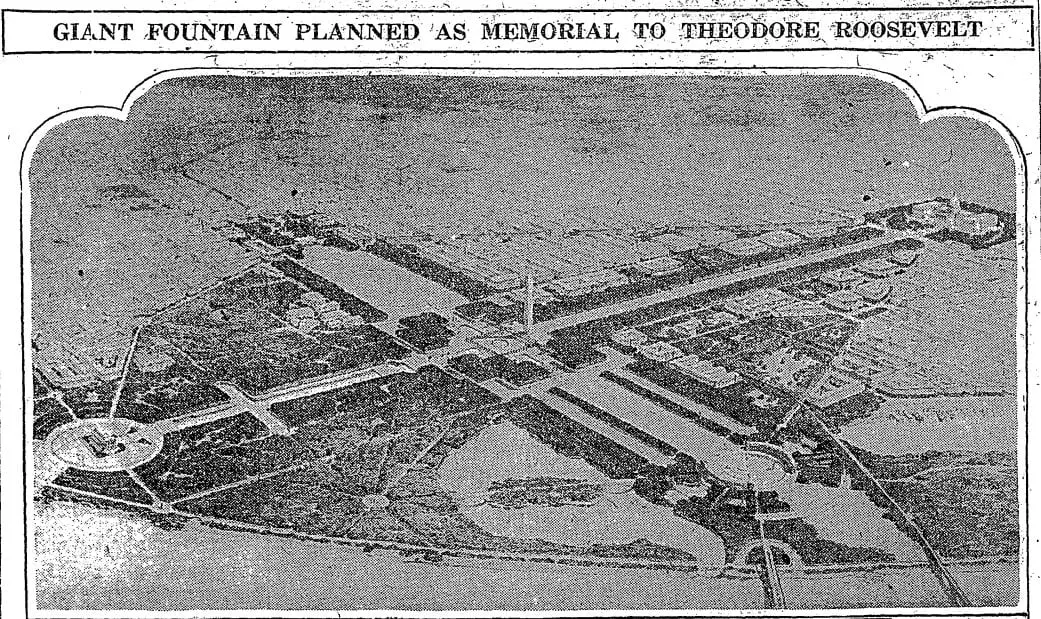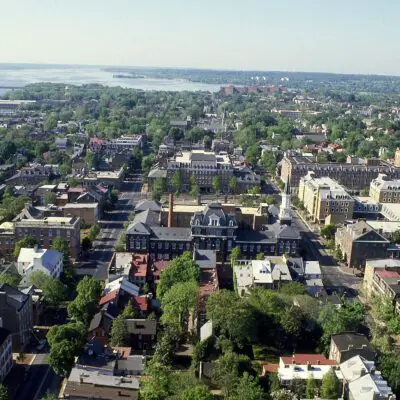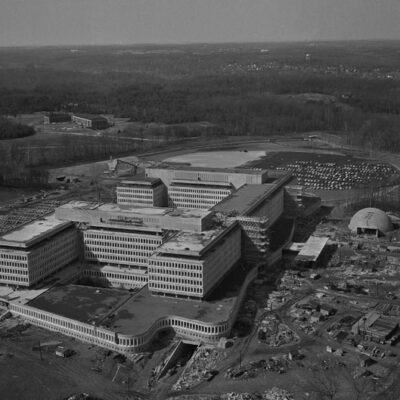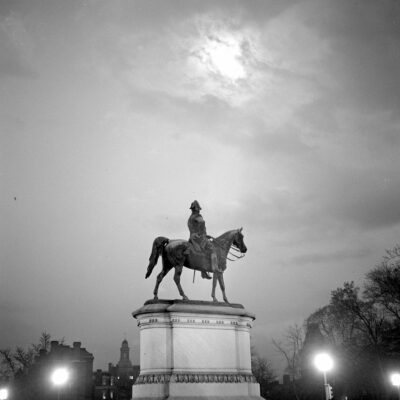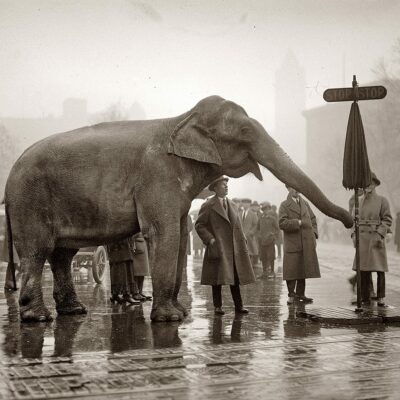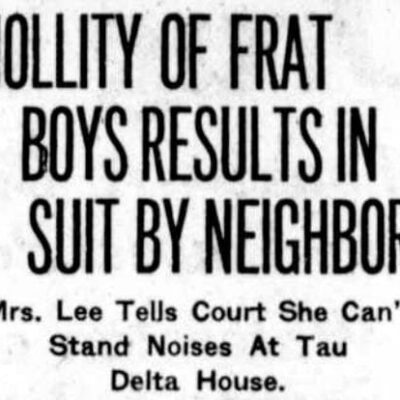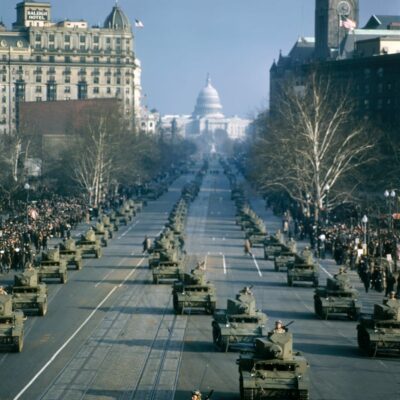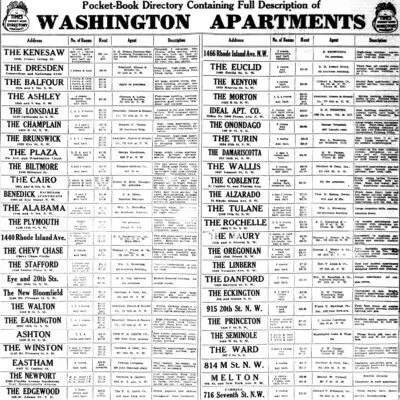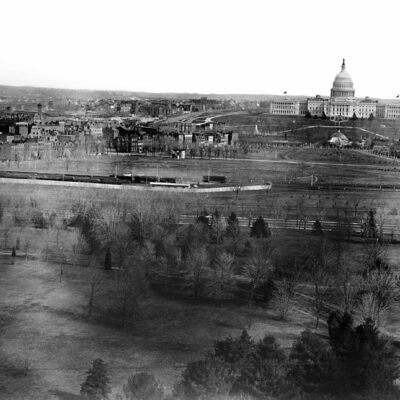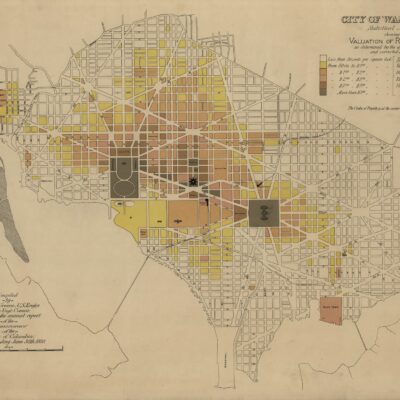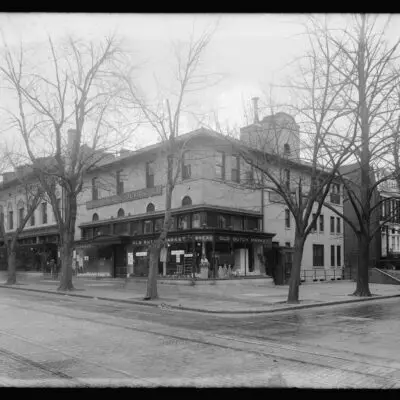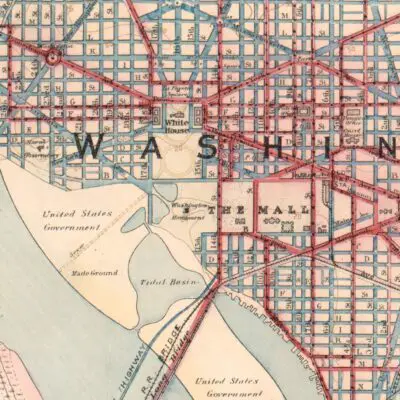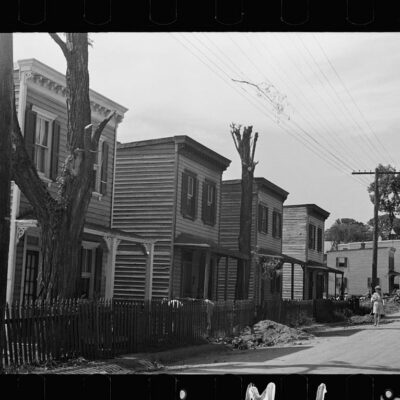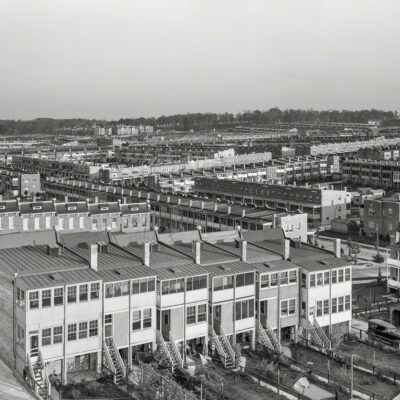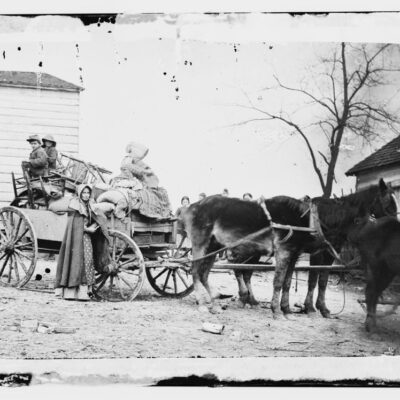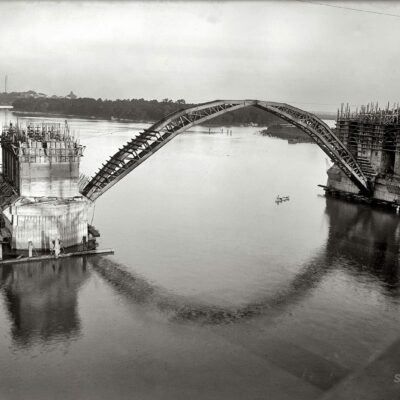Many of you probably don’t know this, but there easily could have been another monument to a president in Washington, D.C. Teddy Roosevelt was lionized and revered as a heroic president and in the 1920s, shortly after his death, there was much discussion about building a large monument to honor him in perpetuity.

We came across a great series of articles in the Washington Post. The one below was from December 13th, 1925, titled “200-Foot Fountain Plan of Memorial Here to Roosevelt.”
A shaft of water rising 200 feet in the air from a flat island of white marble surrounded by water and flanked by two majestic white marble colonnades is the plan for the Roosevelt memorial, which was submitted to Congress yesterday by the Roosevelt Memorial association.
-ad 197-The memorial, the work of John Russell Pope, follows the idea of the park commission plan of 1901 and fills in about one half of the present Tidal basin. The site of the memorial is a spot on Sixteenth street northwest, projected southward to about where the old white bathing beach was situated. The site was selected by the commission largely because of President Roosevelt’s part in the creation of the park plan which the general design follows.
The island from which the fountain rises is to be 280 feet in diameter and the basin surrounding it 600 feet in diameter. The colonnades, which will be a little short of semicircles will flank the basin and be 800 feet between centers. They will be 670 feet long and 60 feet high.
The column of Potomac water that will form the fountain will be forced to the height of 200 feet by an automatic electric pump which will make it entirely independent of Washington’s water supply. The water from the basin will enter the pump from the west and pass through the ponds to the east, serving to cleanse the Washington channel through tidal gates.
From the base of the fountain symbolical ships will carry Roosevelt’s message to the four points of the compass.
“No tablet and no guide book need explain why a spring of living water was chosen as the symbol of that source of inexhaustible energy,” the association declares in announcing the design.

“Roosevelt was a son of the South as well as the North; and his memorial has been designed to be in a sense, a gateway between the two sections. The curving colonnades, set to East and West, offer no obstruction to the eye looking southward from the White House into Virginia. The memorial, therefore, commemorates not Roosevelt only, but also that final closing of the breach between the sections, when the son of a northern father and a southern mother became President of a ‘more perfect union.’
“But that living column rising out of the Potomac waters has a wider and more profound significance. Roosevelt’s spirit sprang out of the deep sources of the nation’s history and sank back in them only to rise anew, cleansing the air and inspiring his countrymen with its power, its sparkle.”
There has been no definite estimate made of the cost of the memorial, but officials of the association roughly estimates that the memorial proper will cost upwards of $5,000,000. The association plans only to erect the memorial and to let the government fill in the Potomac and make other incidental improvements. It is estimated that these latter improvements will cost at least $5,000,000 more.
“In inviting the architects and sculptors of the country, with the consent of Congress, to use this site as the basis of their designs, it was the purpose of the association that the creation of the memorial to the statesman who revitalized and re-established the L’Enfant plan, should result in the development in one of its hitherto undeveloped but major portions,” the association asserts.
“Mr. Pope’s design fulfills this purpose, transforming the loosely related and scattered areas, from the Washington Monument to the Potomac, into a monumental vista from the White House across the river to the Virginia hills, providing the additional setting for the Washington Monument and the Lincoln Memorial, anticipated in the park commission plan.”
Officials of the association pay little attention to the argument that it is too soon after Roosevelt’s death to erect a monument to his memory. They content that here is the opportunity for a great memorial to complete the effect intended by the park commission of 1901. It is a great memorial to a great spirit of Americanism, a memorial which not only does honor to a great American but to the spirit which has made America great, they declare.
They particularly stress the fact that the memorial is so designed as not to dwarf but, on the contrary, to harmonize with the Washington monument and the Lincoln memorial with which it enters into a cross effect. In this way it balances the White House in the plan and really makes the Washington monument the axis of the great plan.
Mr. Pope, the architect, has been guaranteed $25,000 for his design by the association. If it is accepted by Congress he will receive a commission on the project.
Herbert Adams, Paul Cret and Louis Ayres comprised the jury that determined upon the design. Among the nationally known architects and sculptors who competed were Delano and Aldrich, James E. Fraser, John Gregory, John Mead Howells, C. P. Jennewein, C. Grant LaFarge, Charles N. Lowrie, Edward McCartan, Hermann A. MacNeil; McKim, Mead and White; Charles Platt, Irving K. Pond, Albert Rando;ph Ross, Egerton Swartout, Lorado Taft and Fernuccio Vitale.
Wow, can you imaging how different the memorial landscape would look today? Today, this location is occupied by the Jefferson Memorial, which was built about 20 years after this article was published.
Sadly, Teddy never received his monument in D.C., though he did get a whole island named for him, with a nice statue of him planted in the middle. The island, then called Analoston, was purchased in 1931 by the Theodore Roosevelt Memorial Association.
